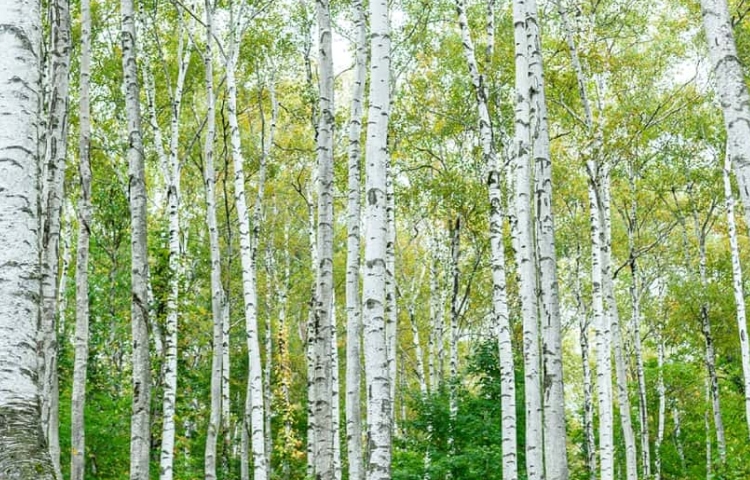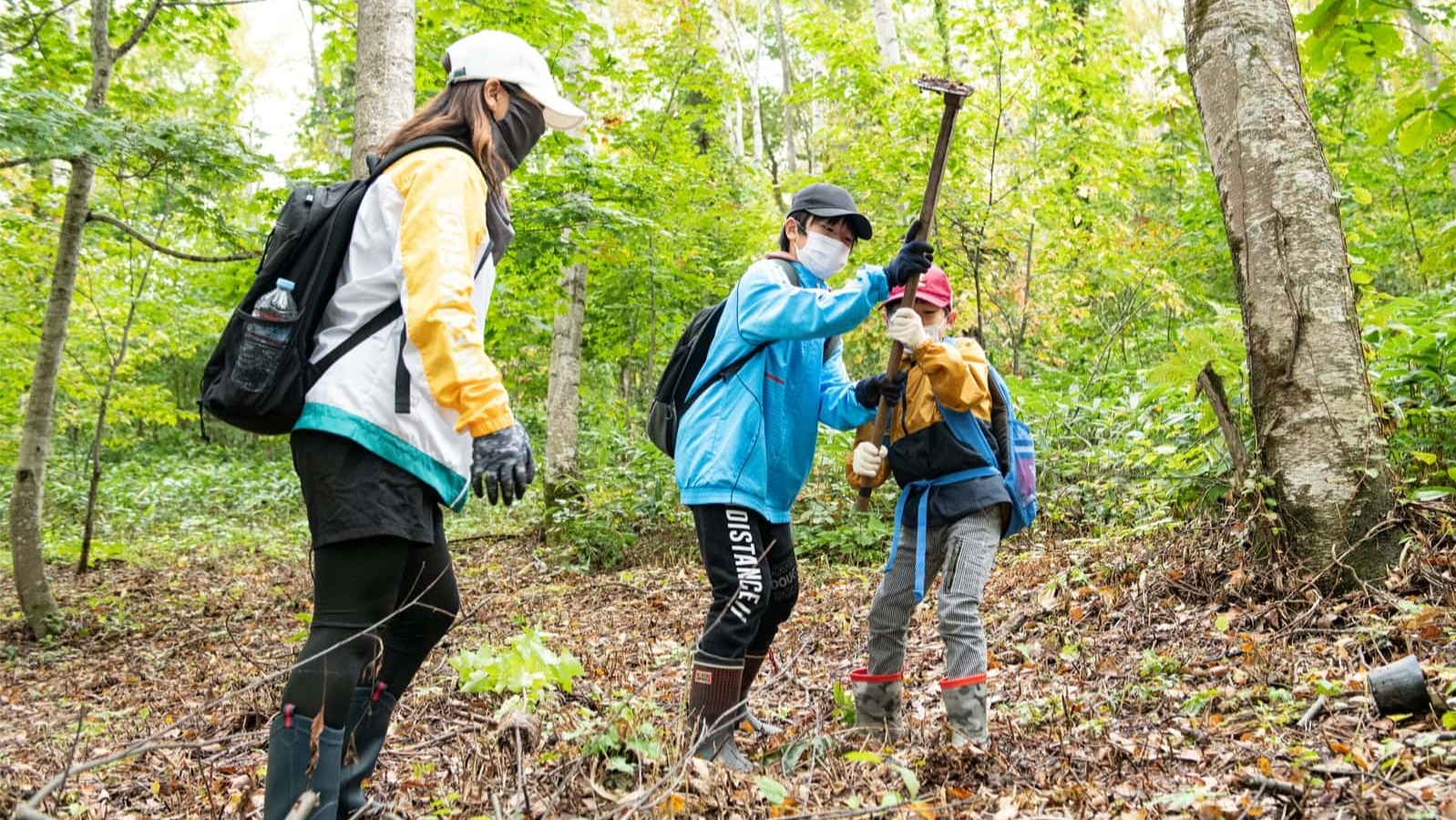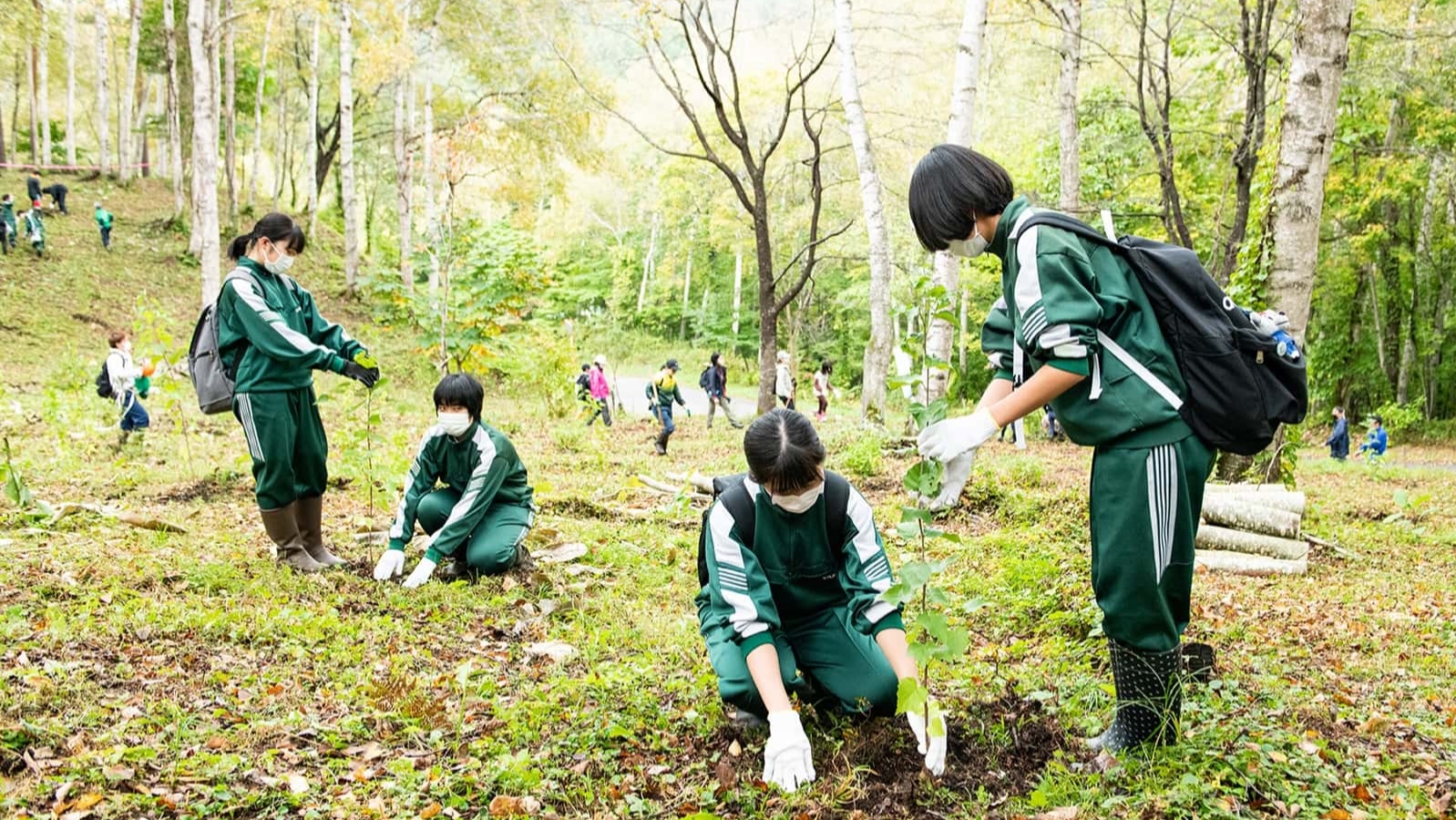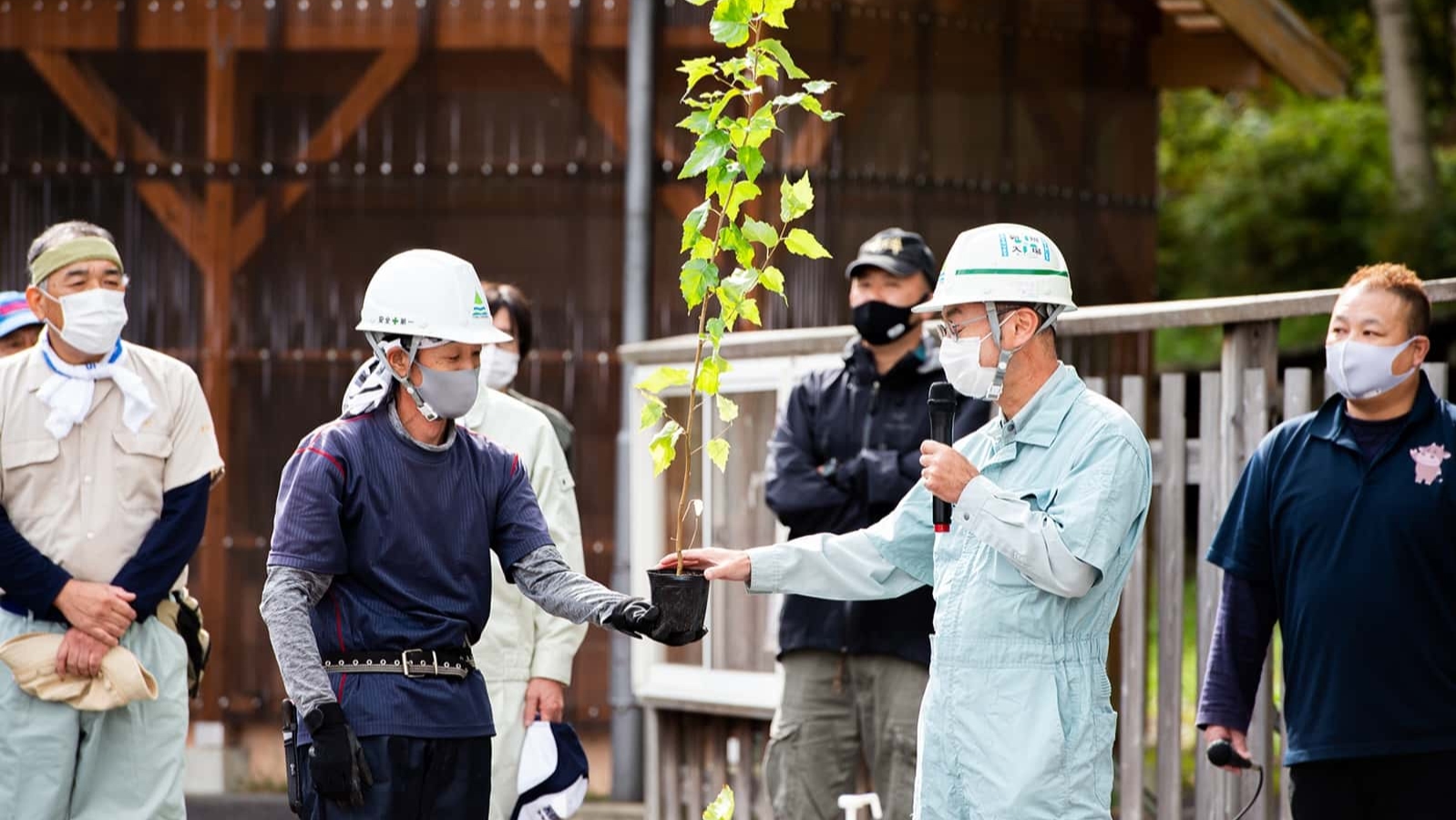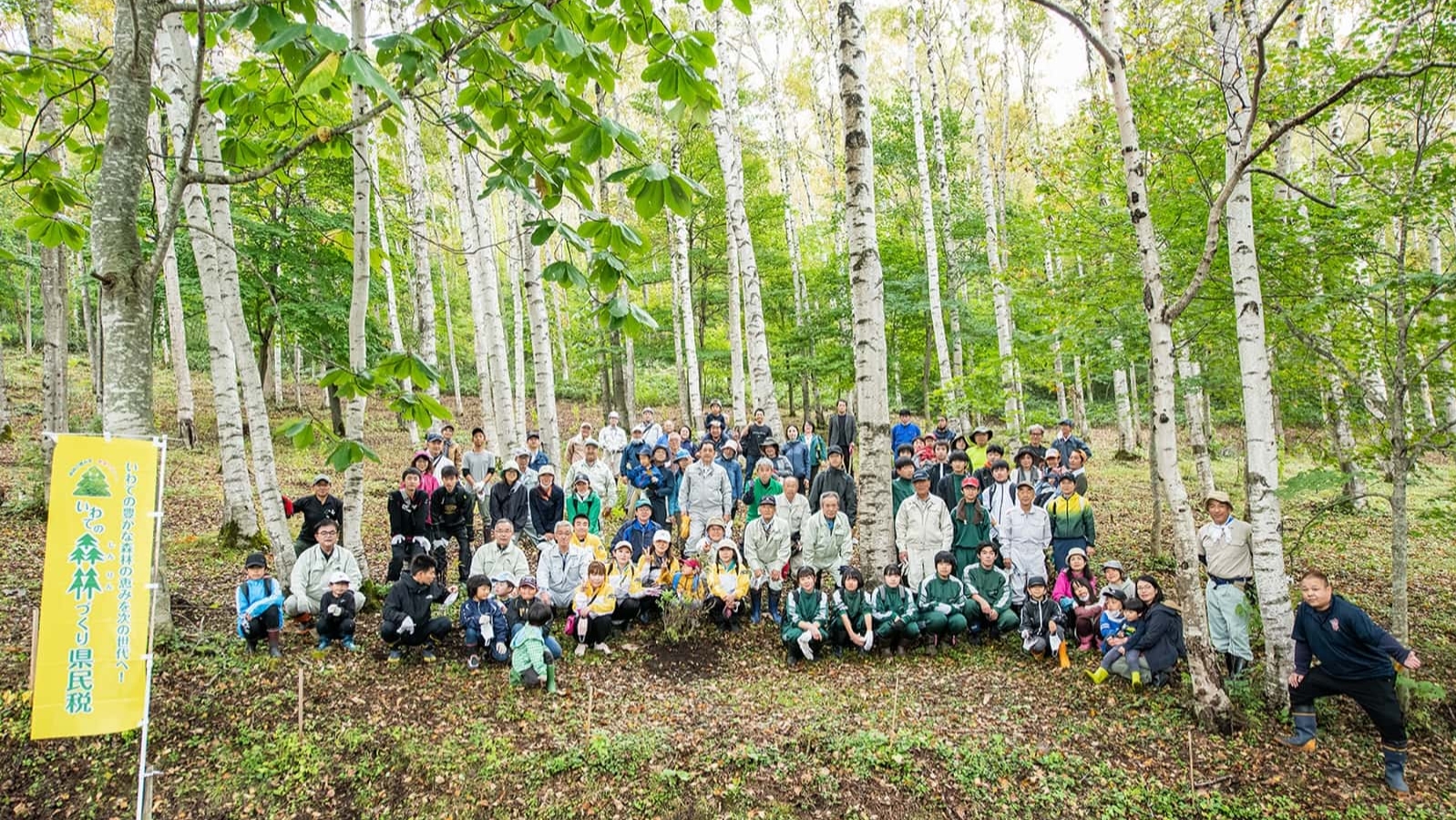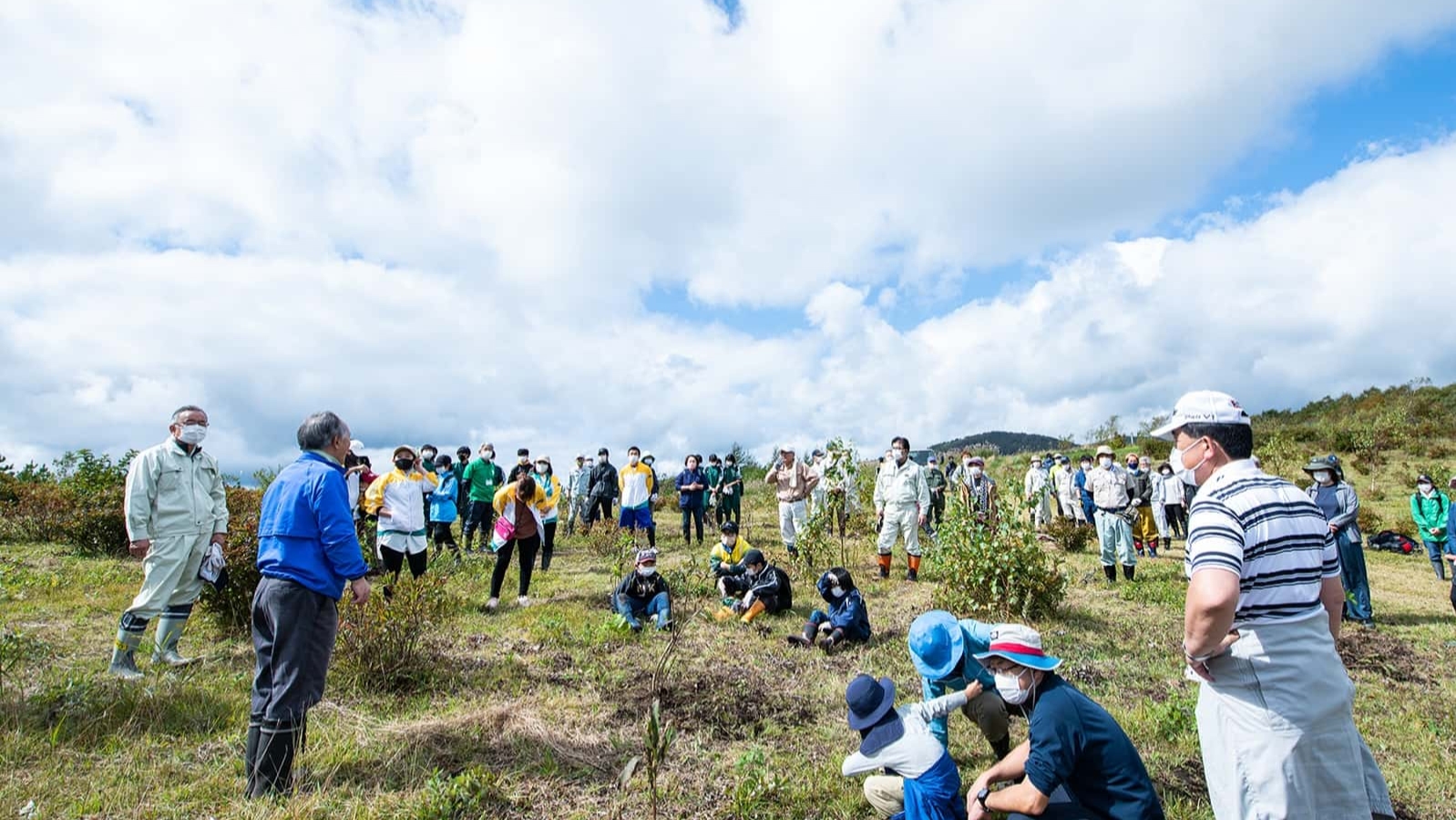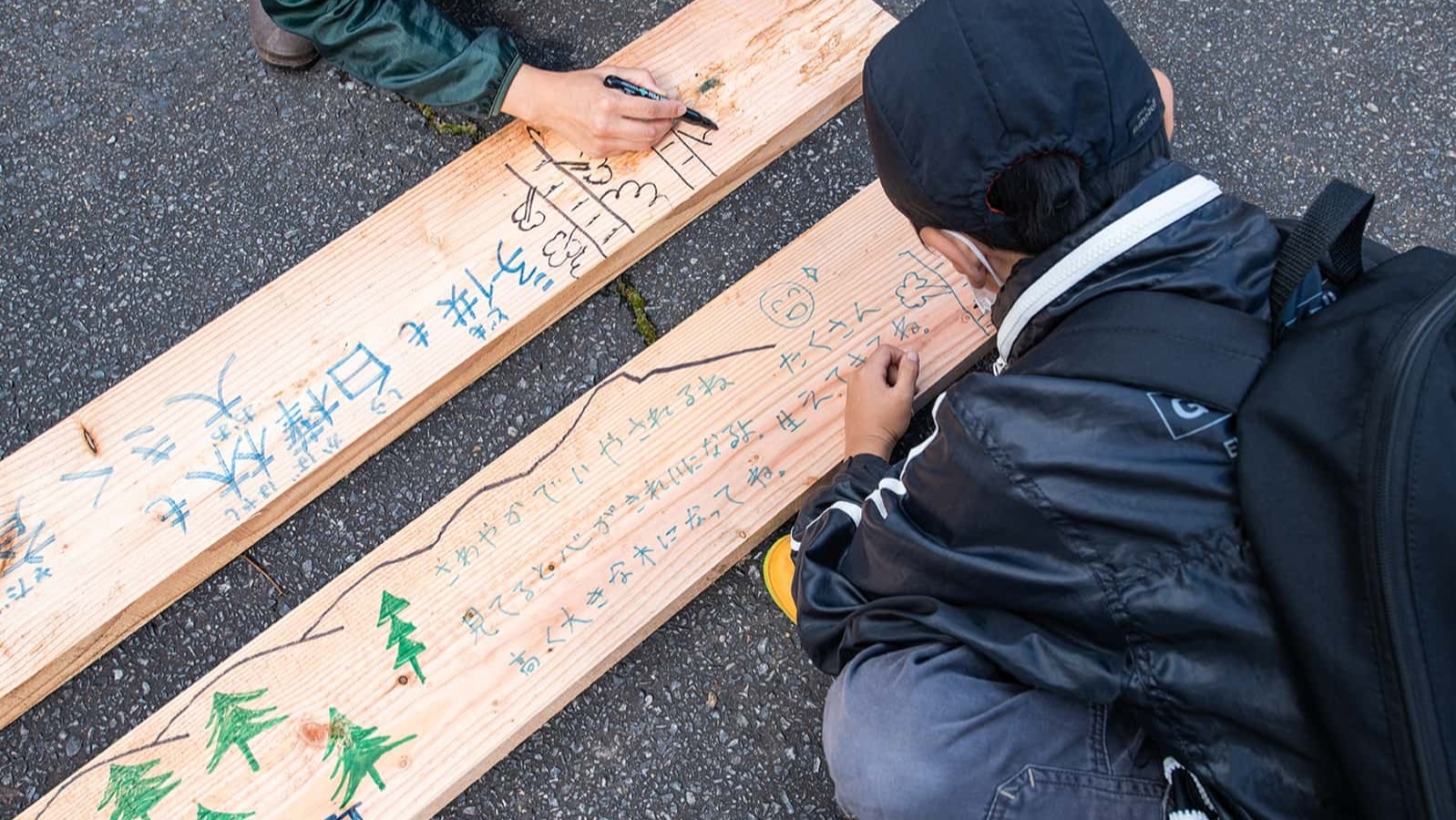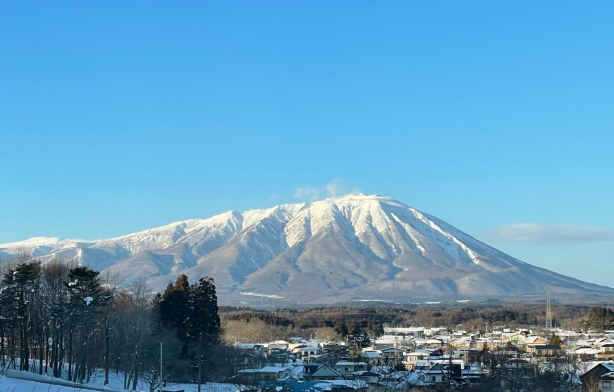Coexistence between nature and people expanding throughout the forest
Hiraniwa Plateau in Iwate Prefecture is a site esteemed as Japan’s most beautiful white birch forest. Straddling Kuji City and Kuzumaki Town, these woodlands occupy 369 hectares along a 4.5-kilometer stretch bordering a national highway and contain over 310,000 white birch trees. It is certainly no exaggeration to label this the largest woodland of its type in Japan, with a full-fledged study conducted in 2014. That effort produced estimates of the number of trees growing there from satellite photos, field surveys, and other sources. Based on these findings, the area has been declared Japan’s premiere white birch forest.

Project Navigator
Mankichi Shimodate
Chairman of the “Hiraniwa Plateau Blessing of the Forest and Drop of Birch” Utilization Promotion Council
Native of Iwate Prefecture. Serving as treasurer and deputy mayor at what was formerly known as Yamagata Village, Mr. Shimodate promoted nature experience programs focused on the Hiraniwa Plateau. To carry on these endeavors following the village’s subsequent merger with Kuji City, he participated in industrial promotion and tourism efforts for seven years as a staff member. The Kuji area gained attention as the setting for the 2013 NHK serial TV drama “Amachan,” with Mr. Shimodate also shining as the mastermind of various related PR activities at that time.
White birch flourishes in cool high-altitude areas. In Japan, they are found in the mountain and highland regions of Hokkaido, Tohoku, Northern Kanto, and Chubu regions. This raises the question of why so many birch trees came to thrive in the Hiraniwa Plateau in Iwate. In the past, this area was the site of local charcoal production and the associated efforts to fell trees. The deforested area came to be widely utilized for livestock grazing, with wild grasses serving as the feed for those animals becoming rampant. In the summer, the rich green carpets of growth reportedly covered the area. In time, however, the grazing was moved to lower altitudes, with white birches, red pines, and other trees once again taking root to dominate the former grasslands. Although white birches are neat and clean in appearance, they are in fact a robust tree species that rose to take over this new site when it became available.
It came to be understood, however, that maintaining such white birch forests demanded extensive preservation and replanting efforts. This was because the area was approaching the 80-year life cycle considered to be the renewal point for the trees themselves. Another factor was that with these birches, a species that needed to bask in bright sunshine, the thick growth conditions there were blocking the sun and impeding natural growth.
Judging from these origins, the white birch forests of the Hiraniwa Plateau were considered to be the result of human endeavor. Following this logic, meanwhile, it was concluded that efforts to continue to promote this local natural environment would once again require human hands. There was an urgent need for clearing, felling, weeding, planting, and other forest maintenance, with local volunteers recruited to launch such environmental conservation.
Visits were organized for Hiraniwa Plateau planting activities by “Kuji☆Lab,” a volunteer group operated by Kuji City in Iwate Prefecture.
Assembled on this occasion was a group of some 120 persons, comprising members of the public, such as local elementary and middle school students, as well as corporate volunteers, government officials, and others.
After assembling at 9:00 a.m., an opening ceremony was followed by explanations of the tasks ahead. The group then promptly moved to the planting site. There, one part of the tree growth was felled, with participants using prepared hoes and scoops to begin work on the forest slopes under the beaming sun.
The process was as follows. Dig up the ground in plots of approximately 20 centimeters, plant approximately 1.5-meter-high saplings removed from pots, then tamp down the surrounding soil with one’s feet. To further encourage growth, cultivation was carried out at about one-meter diameter. This approach is reportedly known as “ground scraping.”
Due to rainfall the previous day, the surface compost of leaves falling from the broad-leaved trees was spongy and light. In the ground below it, however, plant roots had taken firm hold, making it difficult to dig with hoes. Nevertheless, the groups of families and friends continued their lively work, with shouts of joy and laughter emerging from the area.
Gazing warmly at this scene, while also assisting with the work and providing timely advice, was Mankichi Shimodate, Chairman of the “Hiraniwa Plateau Blessing of the Forest and Drop of Birch” Utilization Promotion Council. Having grown up in this area, Mr. Shimodate had always been aware of the white birches, while striving to expand their appeal and utilize them as a local resource. In this sense, he is a pivotal presence in the promotion of preservation activities. Speaking with pride about these trees, he notes: “I have traveled to view other white birch forests in Hokkaido, Nagano, and other areas of Japan, but have never come across trees so beautiful as those here.”
On this occasion, the planting of 200 white birches was completed right on schedule. Most of the participating groups posed for commemorative photos in front of the freshly planted saplings, their faces brimming with smiles. Even if they forget which trees they personally planted, the images of this forest itself will never vanish. Those memories will survive over the years, hopefully encouraging the participants to visit again in the future.
With the arrival of autumn in this forest, the air grows even richer and more invigorating. Amid the silence, the palpable vitality of the saplings can also be sensed in the signs of the impending winter season.

Following the planting session, we talked with Mr. Shimodate.
“Kuji is a rare community in Japan, insofar as it contains mountains, woodland areas, coastline, and other rich resources. I had always wanted to expand knowledge of these wonders, and the growing attention paid to our white birches provided a golden opportunity for such enlightenment.”
He has promoted the area’s appeal as “Japan’s premiere white birch forest,” advancing the development of cosmetics, beverages, and other products made from the sap of these trees. Efforts were also made to inform the local residents of this value, urging them to participate in related conservation efforts. Toward that end, working with the “Kuji☆Lab” citizens volunteer group launched in 2014, two weeding sessions and one tree planting have been implemented as of October 2021. Groups of 50-60 volunteers have participated each time, with this approach appearing to be steadily taking firm root.
“Nature is the source of numerous lessons, reaching beyond the realm of mere tourism resources. Working through real experiences, children come to learn about the importance of making discoveries, taking interest, feeling excitement, and embracing gratitude. There are areas that we can teach due to the very nature of this region, with the white birch forest providing an ideal field for grasping the value of hands-on experiences.”
Preservation of the white birch forest also serves to cultivate people. These efforts promise to pave the way to a future of coexistence between nature and people.
Mr. Shimodate smiles as he says: “What I want to achieve at present (October 2021) is the brewing of local beer from tree sap. I am confident that this will also help create opportunities for young people to start up new businesses or gain employment. I feel that the origin of such ideas is also due in great part to our white birches.”
The trunks of white birch trees are exquisitely white. However, they also retain a certain number of black scars as if suffering wounds. It is said that the trees cause certain branches to fall off to sustain their growth. Young leaves, meanwhile, emerge at the ends of branches stretching up toward the skies above. That robust strength projects a presence that can be aptly described as noble. In that sense, it may be presumptuous for human beings to talk about preservation. To convey such resources to future generations, rather, it is first essential to embrace a sense of reverence and awe. Learning should come after that.
- Text:Mitsuru Shibata
- Photo: Yoshinori Eto



